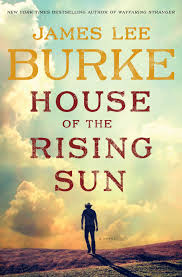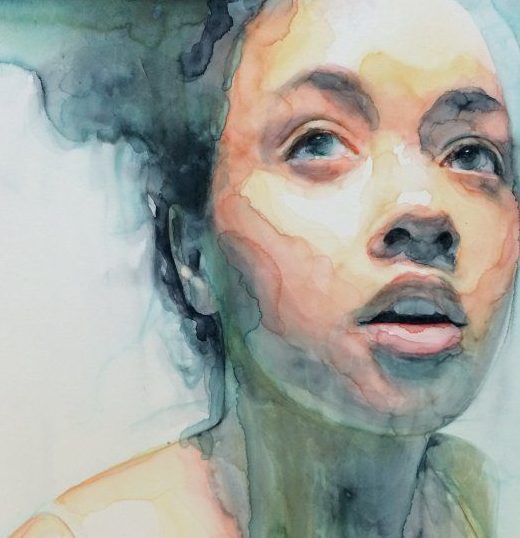A Look at Masterful Character Description Part 2
Let me begin this week’s post, a continuation of looking at masterful character description, by lifting this paragraph from last week’s post:
Description is more than what the eye sees. It involves making judgments, coming to conclusions, forming impressions. Since our descriptions must be filtered through our POV character’s mind and heart, instead of thinking of description as a laundry list of items (hair color, eye color, shoe brand), they should reveal just as much, if not more, about our POV character as the person (or place or animal or food—anything) being described.
I repeat this to be emphatic about the importance of taking the time to both know your characters thoroughly as well utilizing description powerfully and deliberately.
In other words, don’t waste space or your reader’s precious time by writing ineffective description. Make it count. Make it evocative. Make it fresh and revealing.
I’ve been pulling description from James Lee Burke’s novels, for he is a masterful wordsmith. I am continually awed by his descriptions and the way he always seems to sprinkle in these bits at the right times, creating an air of reflection and pausing at appropriate moments.
Inserting Beats
This is an art that fiction writers should take time to study and master: this art of pausing. Many beginning (or just plain boring) writers don’t think about those beats in a scene that provide opportunity to enlighten. Beats are truly the heart of a scene. They emphasize those moments that move us, that we remember, that we feel viscerally.
This isn’t just about action-reaction, (which is very important to learn and master too). It’s about emotional punctuation. Putting a figurative ellipsis or exclamation mark or question mark or em dash in a moment in time in your scene.
No, I don’t mean literally inserting a bit of punctuation. I mean figuratively. Such descriptive writing provides those subtle beats.
Let’s look at a few more passages. This time from Burke’s The House of the Rising Sun, which follows character Hackberry Holland, Texas Ranger, back in the early part of the twentieth century, searching for his son.
The novel begins with setting description (that I’ll share in a future post, because it’s gorgeous), and reveals Hackberry in the desert, beaten, exhausted from riding, talking to his horse at a creek.
When the horse came down the embankment and began to drink . . . Hackberry Holland sat on a rock and placed his feet in a pool, shutting his eyes, breathing through his nose in the silence. It was a strange place indeed, one the Creator had shaped and beveled and backdropped with mountains that resembled sharks’ teeth, then had put away for purposes he did not disclose . . . He longed for a firearm and a canteen sloshing with water and a tall-crown hat and a pair of boots and soft socks and a clean shirt. It was not a lot to ask. Death was bad only when it was degrading, when it caught you sick and alone and lying on sheets soiled with your smell, your fears assembling around you like specters in the darkness. . . .
He stared at the water rippling across the tops of his feet. A great weariness seemed to seep through his body, not unlike a pernicious opiate that told him it was time to rest and not quarrel with his fate. But death was not supposed to come like this, he told himself again. His fingernails were rimmed with dirt, his belt taken from him by his captors, his toes blackened with blood where they had been systematically stomped.
This is our introduction to Hackberry’s description. The scene is in his POV, so this speaks to his present mind-set, his physical and emotional state, and the things he cares about and notices.
Too often writers stop the action and give that laundry list of physical characteristics, but that’s bad writing and entirely out of POV. You have to get into character and feel what your character feels in a given moment. Consider what he cares about.
Most of the time, a character is not going to be thinking about what he looks like. He isn’t sitting on a chair thinking, “I have black hair that falls to my shoulders, a mole on my cheek, a big nose, and a skinny build.” He isn’t going to think, “I am six foot three and handsome.” Seriously.
Most of the time a masterful writer will hardly have a POV character describe himself in any way, but it is important to reveal physical traits of such a character. And the way you do it is by making those personal observations about self relevant to the moment at hand.
That passage above masterfully shows us much about Hackberry. We get a hint of what he looks like and is wearing by his thinking what he isn’t wearing. We get a sense he feels about to die and he wishes for those things because they are what represent dignity and perhaps comfort to him. They tell something about Hackberry.
 The only actual descriptions we get of his body are ones he is presently keenly aware of, things he can see before him as he sits at the water’s edge: his fingernails, his toes. He doesn’t think about how his once-strong frame is now emaciated from days without food. The only piece of clothing he comments on, again, is one that’s missing: his belt. And that mention tells us he was recently captured (and perhaps he escaped).
The only actual descriptions we get of his body are ones he is presently keenly aware of, things he can see before him as he sits at the water’s edge: his fingernails, his toes. He doesn’t think about how his once-strong frame is now emaciated from days without food. The only piece of clothing he comments on, again, is one that’s missing: his belt. And that mention tells us he was recently captured (and perhaps he escaped).
As a reader, I get a strong impression of this character without knowing all his physical stats. More important, I get a sense of him.
And you can feel the beats, the pauses, as he sits there. He briefly notices how strange the pool is. He thinks about death. He watches the water ripple.
Burke creates textural time passing here; it’s not rushed.
Here’s another passage, combing character and setting imagery to paint a vivid picture:
They walked out on the beach. She was an erect and tall girl, wearing a full-length dress, sleeves to the wrist, and a short-brim flat-topped straw hat with cloth flowers sewn on it. She didn’t have a coat but seemed to take no notice of the chill in the wind or the sand that stuck to her shoes and stockings. The sky was maroon and ink-stained, the waves crashing five feet high on the beach, filled with seaweed and tiny crabs and the bluish-pink sacs of Portuguese man-of-wars. In his boots, he could hardly keep up with her.
When Hackberry describes meeting her (a page earlier), he gives no description but instead notes what she says about her past, admitting she is nineteen, then he tells her, “You’re a pretty girl.” Hackberry, walking beside her, now notices she is erect and tall. He notes her clothing, the most detail being the hat. Instead of saying “sand stuck to her shoes,” he says she took no notice of the sand stuck to her shoes, which tells us something more interesting about Ruby.
Not a whole lot of description but enough to paint a picture of her, the beach, and the setting in general. The last line is also telling: she is walking fast, and that’s something he notices and adds to the uniqueness of her character.
Minor characters need description. Every time you have a new character “come on stage,” you need to describe him. You don’t need much, but what you do choose to say should be creative and revealing.
The inside of the courtroom smelled of cigars and unemptied cuspidors. the judge wore a gray-streaked black chin beard and had a large, deeply pitted veined nose on which his spectacles perched like magnifying glasses on an owl. Hackberry could not stop staring at the strange optical effect created by the magnification. The judge’s eyes reminded Hackberry of giant bugs trying to swim underwater. . . .
Hackberry looked across the room at Maggie Bassett and her male companion, who had a shock of white hair like John Brown’s in a windstorm, and a profile that matched, snipped out of tin, his eyes lead-colored. He wore button shoes and a bloodred silk vest and a tall collar and a black rain slicker he hadn’t bothered to remove, glazed with sleet melting on the floor.
This is masterful description of minor characters. We get sensory detail (brief) of just the smell of the courtroom, which is (assumedly) Hackberry’s first sensory impression (keep that in mind when you have a character walk into a room. Ask: What sensory detail does my character get hit with instantly? Smell, bright lights, sounds, the humidity of the air?).
Then his eyes rivet on the judge. He doesn’t go through a full laundry list from head to toe. Instead, he locks onto the one feature that stands out: the veined and pitted nose and the thick lenses of his glasses. The other man’s hair and lead-colored eyes, along with his odd combination of clothing, catches Hackberry’s attention.
Little telling details. Textural details. They take up little space so that attention can be paid in the scene to the action and dialogue.
Characters need to be described, but the challenge for writers is to come up with masterful, appropriate, telling description.
Here’s an assignment for you. Go to a public place, such as a mall or coffee shop or busy park at lunch. Sit with your laptop or notepad and choose someone to describe. Pick just a few things that stand out. What catches your eye first and why? What draws your attention and why? Play around with adjectives and similes. Think about adding in a few sensory details other than sight.
Describe a dozen people, maybe two dozens. Go to different locations: a public swimming pool, a skateboard park, an old folks’ home. Challenge yourself to go beyond the stereotype and obvious and dig deeper. Think about your emotional impressions and why those come up.
If you can identify those, you can mine the opinions and prejudices and tastes of your POV characters. It’s all about getting deep into character.
I hope this is helping you become a masterful describer. Share in the comments your observations about these passages, or share a passage from a novel you are reading that gives masterful character description!












What an insightful and inspiring post on deepening characterization! Thank you!
Knowing the character is the key. Burke is an example of this. It’s clear he was the inside the character’s mind. Knowing every inch of good and bad and longing. A writer can only do this if they take the time to understand who they are writing about. Many writers want to jump right in while the idea is fresh in their minds. I like your writing challenge. I live in a college town. Every now and than I do the same.
I picked up an audio copy of “House of the Rising Sun” so I could listen to Burke one evening – I’ve not read any of his work to date. I agree with your assessment of his skill–masterful. But also stunning. After a chapter or two, I felt bludgeoned with the inhumanity displayed by Hackberry’s captors and couldn’t continue. I think if I were reading, it might be easier. I could turn a page and see he still lived, perhaps recovered somewhat in the following chapter. But listening was harrowing as well as beautiful.
Thanks for this great information on description in writing that tells more about protagonist than person or place being described. I’ve shared this post online. All best to you!